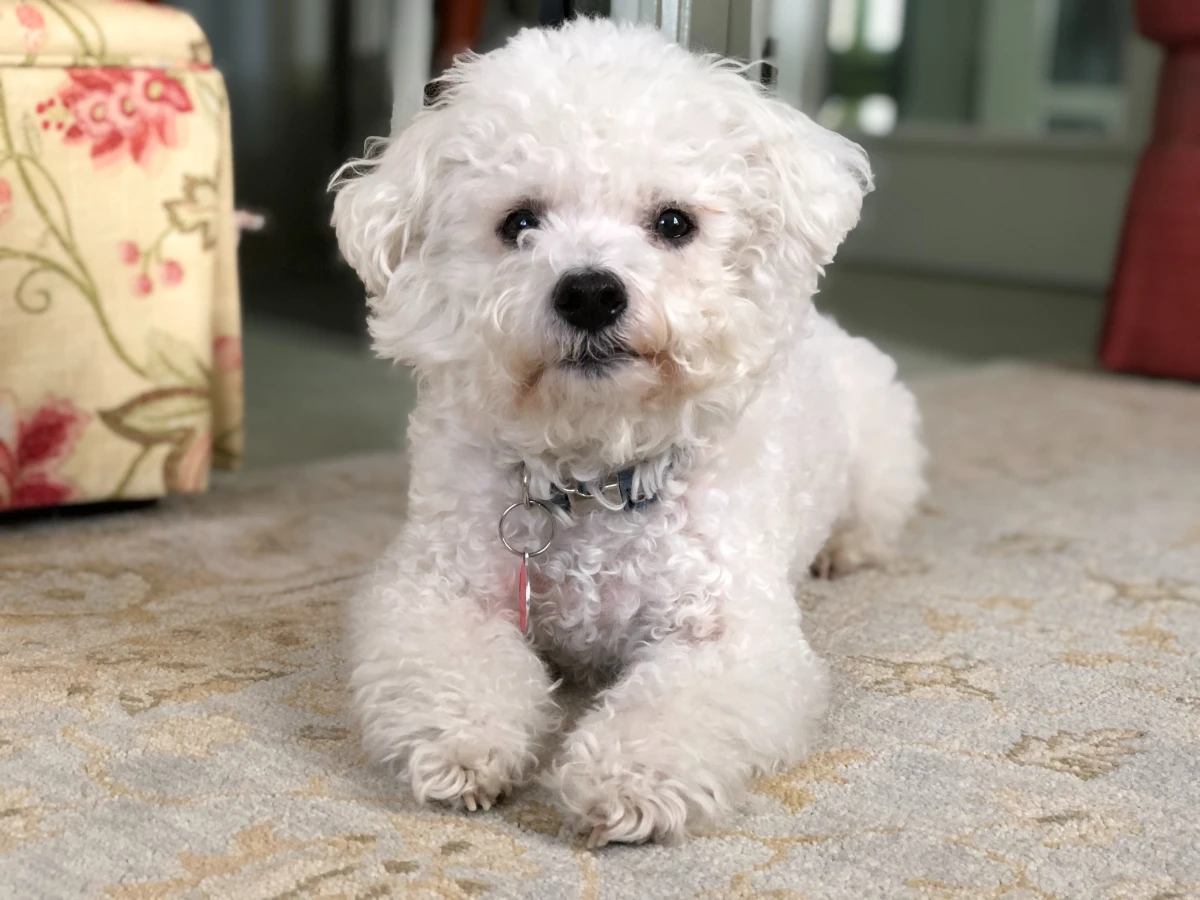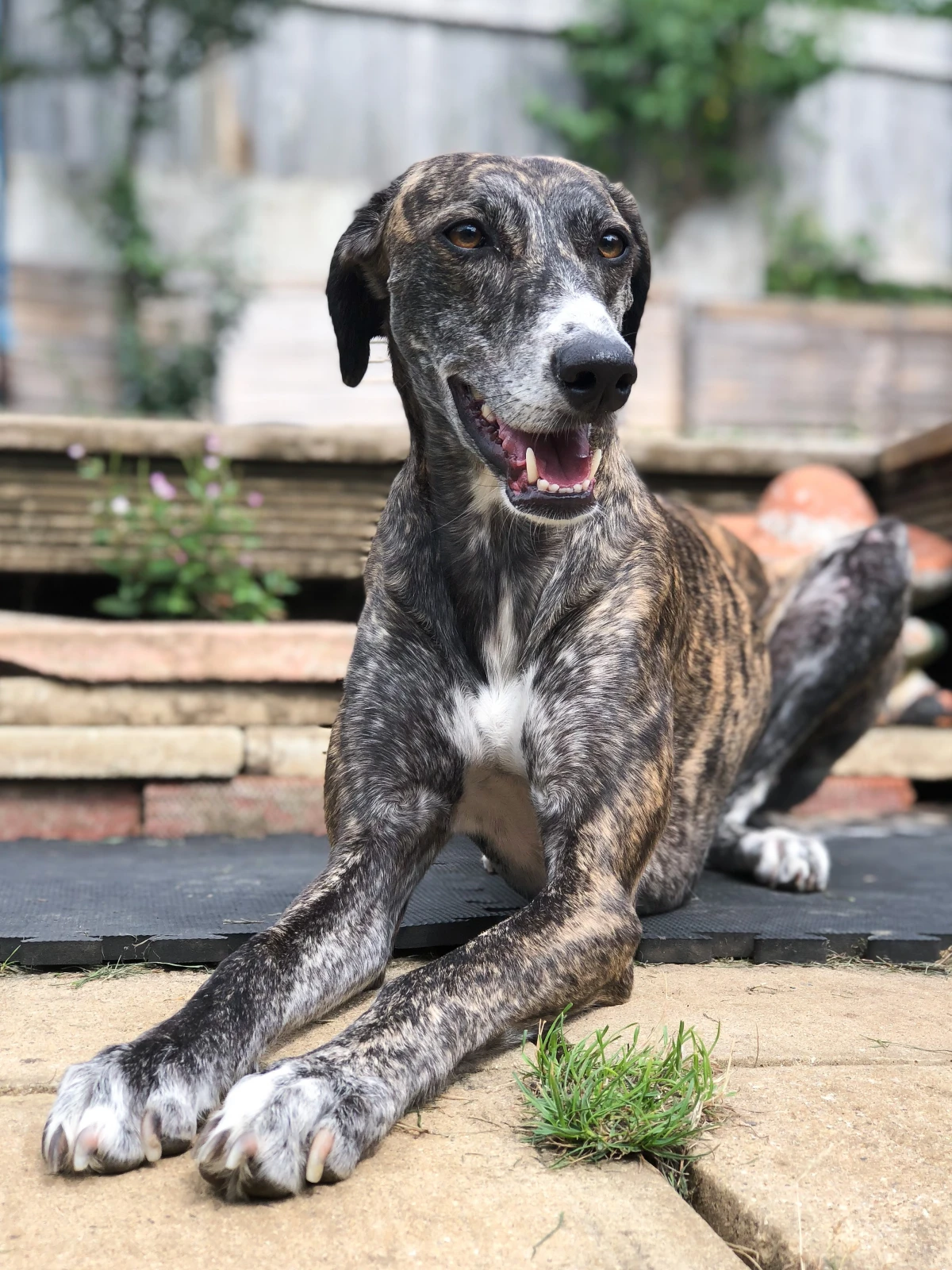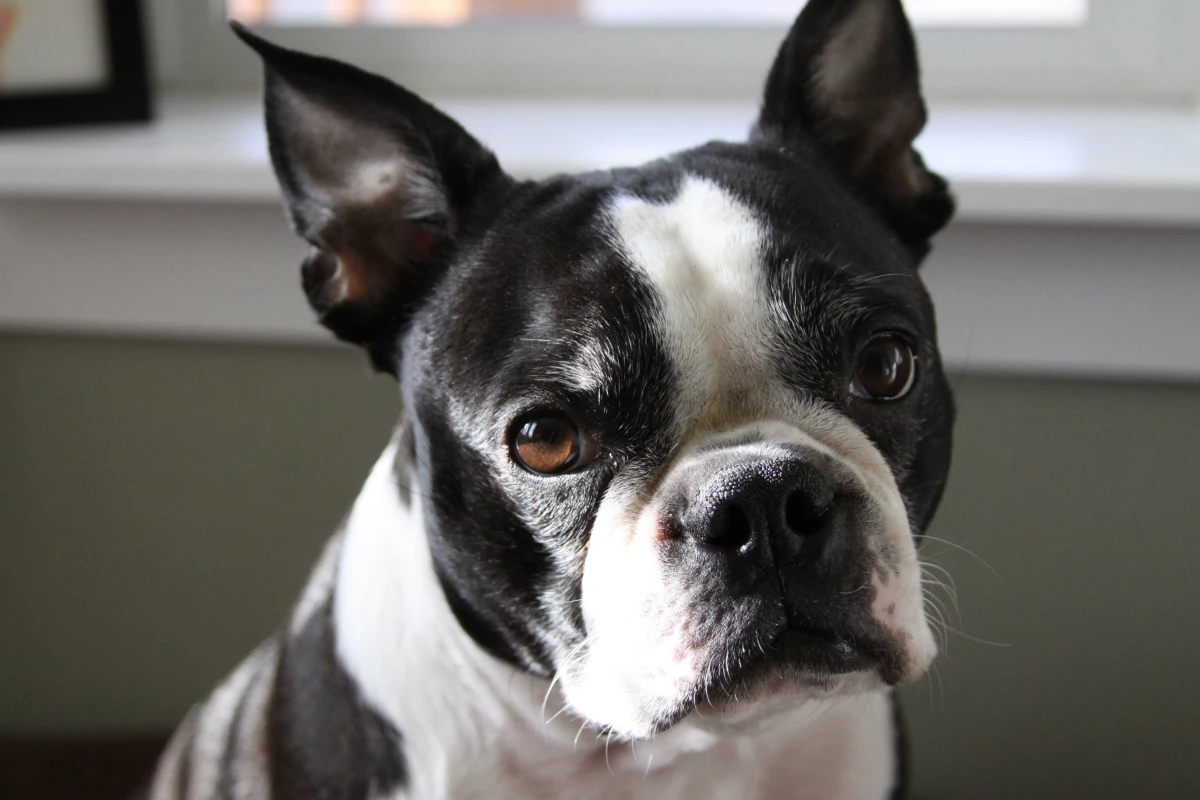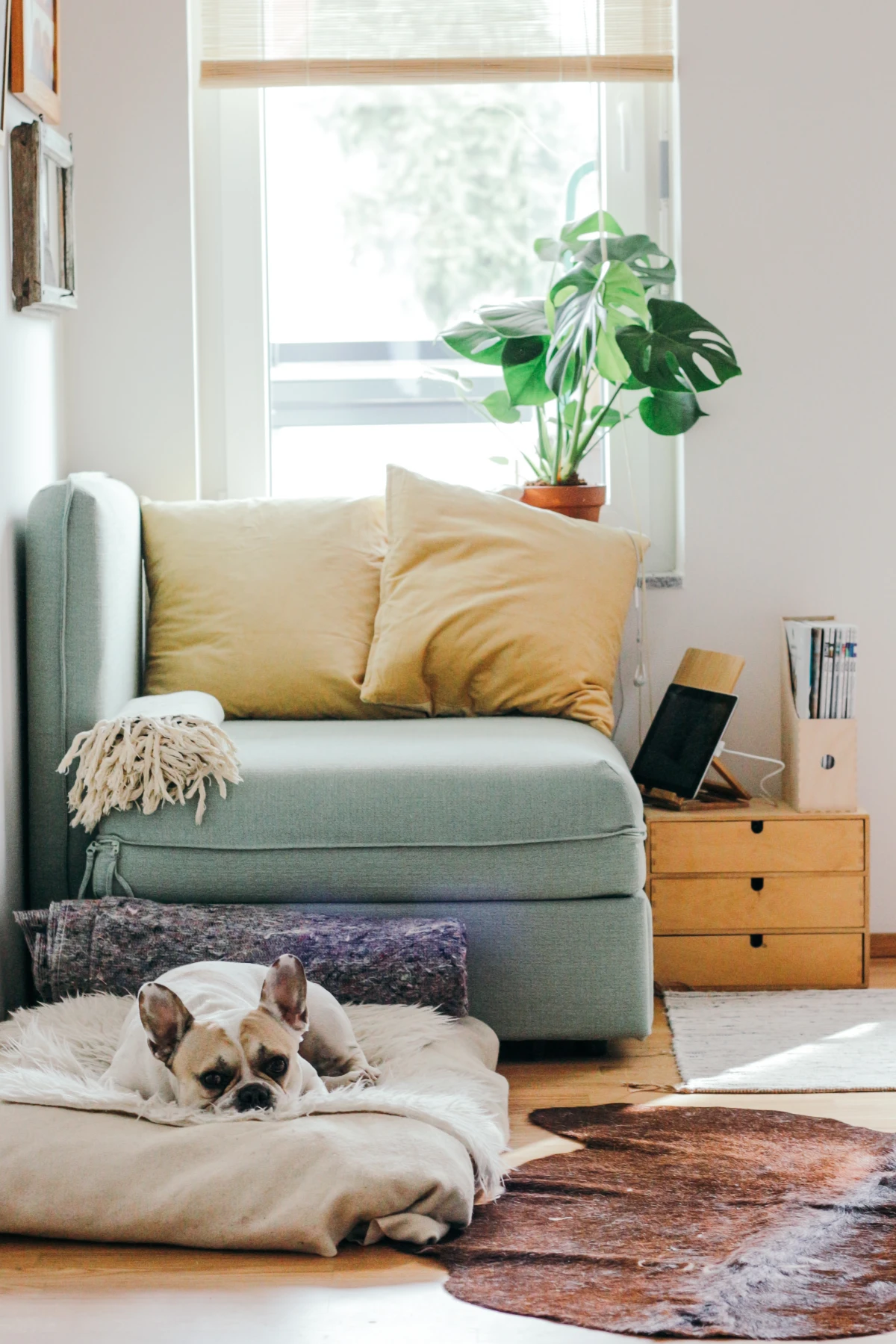The Real Guide to Choosing an Apartment Dog (and Avoiding Heartbreak)
In my time as a dog trainer and shelter consultant, I’ve seen the same story play out over and over. A well-meaning person in a city apartment decides it’s time for a dog. They hit Google, search for ‘best apartment dogs,’ and pick a cute face from a list. A few months down the line, my phone rings. The dog won’t stop barking, the neighbors are furious, and the security deposit is a distant memory thanks to a chewed-up door frame.
In this article
- First, Let’s Talk Energy (It’s Not What You Think)
- What About Barking? Let’s Get Real.
- How to Actually Choose a Dog (In the Real World)
- Don’t Skip This Step: Your Landlord’s Rules
- A Closer Look at Some Popular Apartment-Friendly Breeds
- Okay, So Where Do I Actually Find My Dog?
- Your ‘Welcome Home’ Shopping List
- Final Thoughts: A Reality Check
- Inspirational Gallery
The person is stressed, the dog is miserable, and everyone feels like they failed. But the mistake wasn’t wanting a dog—it was starting with the wrong question. The right question isn’t, ‘What breed is good for an apartment?’ It’s, ‘What kind of dog actually fits my specific apartment life?’
Success in a small space has less to do with the dog’s size and more to do with a perfect match between their needs and your lifestyle. We’re talking energy, noise levels, grooming, and your daily routine. Honestly, I’ve seen massive Great Danes thrive as perfect gentlemen in studio apartments and, on the flip side, tiny terriers that made an entire building miserable. Breed is a helpful starting point, a set of clues about temperament and drive. But at the end of the day, you’re bringing an individual into your home. This guide is all about helping you find a canine partner who truly thrives, not just survives, in the city.

First, Let’s Talk Energy (It’s Not What You Think)
Most articles slap a simple ‘high’ or ‘low’ energy label on a dog, and frankly, that’s misleading. In my professional experience, it’s much more useful to think of canine energy in two distinct types: ‘sprinter’ energy and ‘marathoner’ energy. Understanding this difference is a game-changer for apartment dwellers.
- Sprinters: These are the dogs built for intense, short bursts of action followed by… well, epic naps. Think of a Greyhound. They can go all out for a 30-minute blitz at the dog park, and then they’re content to be a professional-level couch potato for the rest of the day. This pattern is often a fantastic fit for apartment life. You can meet their needs with focused, daily exercise and then enjoy a calm buddy at home.
- Marathoners: These pups were bred for all-day, sustained work. We’re talking about breeds like Border Collies, Australian Shepherds, and Huskies. They don’t just need to run; they need a job. Without hours of both physical and mental stimulation, that incredible marathon energy gets channeled into things you won’t like—chewing, pacing, and non-stop barking are the classic signs of a bored marathoner. This type of dog is incredibly challenging to keep happy in a typical apartment without a seriously dedicated owner.
So where do other common breeds fit in? A Golden Retriever often leans towards the marathoner side, needing consistent daily activity to stay balanced. A Corgi, though small, is a herding dog with a surprising amount of marathoner stamina packed into a little body. The key is to be brutally honest about how much time you can really dedicate every single day.

What About Barking? Let’s Get Real.
A dog’s bark is its voice. They aren’t doing it to annoy your neighbors; they’re communicating. In an apartment, there are a few common reasons for barking:
- Alert Barking: The dog is just doing its job, announcing that someone is near. In an apartment, ‘near’ means the person walking down the hall, the elevator dinging, or your upstairs neighbor dropping a spoon. Breeds hardwired as watchdogs can be a real liability here.
- Boredom Barking: This is that soul-crushing, monotonous bark. It’s the sound of an intelligent brain with nothing to do. It’s basically the dog’s way of saying, “I’m so BORED I’m going to scream.”
- Separation Anxiety Barking: This isn’t a training problem; it’s a genuine panic attack. It’s a high-pitched, distressed bark or howl that starts shortly after you leave. Breeds created to be constant companions can be more susceptible to this.
Yelling ‘Quiet!’ just adds to the chaos. The professional approach is to change the dog’s feelings about the noise. Here’s a simple technique called counter-conditioning:

Step 1: Get some amazing, high-value treats. I’m not talking about dry biscuits. Think tiny pieces of cheese, chicken, or hot dog.
Step 2: Have a friend walk up and down the hallway outside your door. The instant you hear the footsteps—before your dog even has a chance to tense up and bark—toss a treat on the floor.
Step 3: Repeat, repeat, repeat. Over time, your dog’s brain will literally rewire. The sound of footsteps will no longer predict an intruder; it will predict that delicious chicken is about to magically appear. They’ll start looking at you for a treat instead of barking at the door.
How to Actually Choose a Dog (In the Real World)
Okay, so you’re ready to meet some dogs. Whether you’re at a shelter or a breeder, here’s how to look past the cute face and assess their actual personality.
The 30-Minute Quiet Sit
The shelter is a chaotic storm of smells and sounds. A dog’s behavior in a stressful kennel tells you almost nothing. Ask the staff if you can take the dog to a quiet office or a separate room. Then, just sit down with a book or your phone and ignore the dog for 15-20 minutes.

What you’re watching for is the dog’s ability to find its ‘off switch.’ Does it pace the whole time? Does it bark at every tiny sound? Or does it eventually sigh, lie down, and chill out? A dog that can settle in a new place is showing you it has a good baseline for handling stress.
Heads up! Some busy shelters might not have a private room available. If that’s the case, here’s your Plan B: Observe the dog in its kennel. Is it spinning and barking frantically at every passerby? Or is it sitting calmly, watching the world go by? A dog that can observe the chaos without joining in is showing some real self-control, and that’s a great sign.
Ask the Right Questions
The foster parent or the shelter volunteer who walks the dog every day is your secret weapon. But don’t ask vague questions like, ‘Is he a good dog?’ That’s useless. Get specific:

- ‘When you’re in the kitchen and drop a pan, how does he react? Does he startle and then recover, or does he hide for an hour?’ (This reveals sound sensitivity.)
- ‘Have you ever recorded him when he’s alone? What does he do?’ (This is how you screen for separation anxiety.)
- ‘What’s his body language like if you walk past his food bowl while he’s eating?’ (This checks for resource guarding, a major no-go in small spaces.)
- ‘Has he ever lived in a home with shared walls before?’ (Previous experience is a big plus!)
Don’t Skip This Step: Your Landlord’s Rules
I know it’s boring, but I’ve seen people forced to rehome a dog they love because they skipped this step. Before you even look at a dog, get a copy of your building’s pet policy in writing. Check for:
- Breed Restrictions: Many buildings have blanket bans on certain breeds (like Pit Bulls, Rottweilers, etc.) due to insurance policies. It has nothing to do with the individual dog’s temperament.
- Weight Limits: A 40-pound limit is common. Don’t adopt a Golden Retriever puppy and cross your fingers, hoping it will stay small. It won’t.
- ‘Pet Interviews’ and DNA Rules: Yes, this is a thing. Some modern buildings require a ‘pet interview’ or even a DNA swab to track unscooped poop. Be prepared.

A Closer Look at Some Popular Apartment-Friendly Breeds
Remember, these are just general profiles. Every single dog is an individual. But the breeds below often have traits that align well with apartment living, as long as you know the whole story.
Cavalier King Charles Spaniel
These dogs were bred to be the ultimate lap-warming companions. They’re typically gentle, quiet, and just want to be with their person. The flip side? They need to be with their person. They are highly prone to separation anxiety and aren’t a good choice if you’re gone for 10 hours a day. Their beautiful coat also needs daily brushing to prevent painful mats. Oh, and they are prone to some serious genetic health issues, so finding a truly reputable breeder or rescue who does extensive health screening is absolutely critical.
Greyhound
It sounds crazy, but retired racing Greyhounds are the MVPs of apartment dogs. They are the ultimate sprinters. Give them one good walk or a safe run in a fenced area, and they’ll happily sleep the day away. They’re surprisingly graceful indoors and rarely bark. The catch? They have an insane prey drive. A Greyhound must never be off-leash in an unfenced area. Also, their necks are wider than their heads, so a standard collar is a no-go. You absolutely need a special ‘martingale’ collar (about $15-$25) or a well-fitted harness to walk them safely.

Bichon Frise
Cheerful, small, and often recommended for people with allergies. That ‘hypoallergenic’ coat is the main draw, but it comes with a major commitment. To prevent their hair from forming tight, painful mats on the skin, a Bichon needs daily brushing and professional grooming every 4-6 weeks. Be real with yourself: this is a significant time and money investment. Expect to pay between $80 and $120 per grooming session. If you can’t commit to that, please choose another breed.
Bulldog (English and French)
Their comical faces and low energy needs make them popular couch potatoes. But that cute, flat face is a genetic condition called brachycephaly, and it causes breathing problems. The snorts you think are cute are often the sound of a dog struggling for air. They overheat dangerously easily. The biggest reality check here is the cost. These are among the most expensive breeds to own due to vet bills. It’s smart to have a dedicated savings account for them; putting aside $100 or more per month for their future health needs is a realistic plan. Many need surgery just to breathe comfortably.

Basenji
The famous ‘barkless dog.’ It’s true, they don’t bark. But they’re not silent—they communicate with a range of yodels, chortles, and screams that can be just as loud. They are wickedly smart and independent. A bored Basenji is a master escape artist and can be very destructive. They need a ton of mental stimulation and are generally not recommended for first-time owners.
Okay, So Where Do I Actually Find My Dog?
You’re avoiding pet stores (good!), so that leaves shelters and breeders. Here’s how to spot the good ones.
A reputable breeder will be proud to show you where the dogs live, will have health certificates for the parent dogs, and will ask you a ton of questions to make sure you’re a good fit. By the way, a good breeder almost always specializes in just one or two breeds.
Red flags for a bad breeder or puppy mill:
- They want to meet you in a parking lot. (HUGE red flag!)
- They have many different ‘designer’ breeds available.
- They won’t let you see the puppy’s parents or where they are raised.
- They are focused on getting your money quickly and don’t ask about your life or home.
Your ‘Welcome Home’ Shopping List
Before your new friend arrives, it’s a good idea to have some essentials ready. Here’s a quick checklist with some ballpark prices:
- A properly-sized crate: $50 – $100
- The right collar/harness: $20 – $40 (Remember, a martingale for sighthounds!)
- A white noise machine: $20 – $40 (A lifesaver for muffling hallway sounds)
- Opaque window film: $15 – $25 (To block views that trigger barking)
- Enzyme cleaner: $20 (For the inevitable accidents. Regular soap won’t cut it.)
- Food puzzles and chew toys: $30 – $60 (A bored dog is a destructive dog!)
Final Thoughts: A Reality Check
Living with a dog in a high-rise presents unique challenges, especially with potty training. You can’t just open the back door. You MUST commit to a rigid schedule, taking a young puppy out every few hours—yes, even overnight. An indoor potty spot (like a grass patch on a balcony) can be a lifesaver for those middle-of-the-night emergencies.
And please, if you’re dealing with serious issues like growling, biting, or full-blown panic attacks when you leave, don’t try to solve it with internet advice. Get professional help. Look for a Certified Professional Dog Trainer (CPDT-KA) for training issues or a board-certified Veterinary Behaviorist (DACVB) for more complex problems. You can find certified professionals through the Certification Council for Professional Dog Trainers (ccpdt.org) or the American College of Veterinary Behaviorists (dacvb.org).
The greatest act of love you can give a dog is choosing one that fits the life you actually have, not the one you wish you did. Be honest about your time, your budget, and your energy. When you get the match right, sharing a small home with a dog is one of the best things in the world.
Inspirational Gallery
The single most useful command for apartment life:
No yard? No problem. How do you manage potty training in a high-rise?
Consistency is everything. Set alarms for frequent trips outside, especially after waking, eating, and playing. For emergencies or tiny puppies, a real-grass patch like Fresh Patch on a balcony can be a game-changer, as it teaches them the right surface texture and minimizes indoor accidents. Some owners even train their dogs to ring a bell on the door to signal when they need to go out.
According to canine experts, just 15 minutes of intensive scent work or problem-solving can be more tiring for a dog than a full hour of running.
This is your secret weapon on rainy days. Instead of more laps around the block, engage their brain. Hide treats around the apartment for them to find, or invest in puzzle toys. The interactive feeders from Nina Ottosson, for example, turn mealtime into a stimulating mental workout that leads to a calmer, more satisfied dog.
Wire Crate: The practical choice. Offers maximum ventilation and visibility. Brands like MidWest Homes for Pets are durable and often come with a divider for puppyhood. However, they have a distinctly utilitarian look.
Furniture-Style Crate: The design-savvy pick. Models like the Fable Pets Crate or the Diggs Revol are designed to blend in as a stylish end table. They’re an investment but can solve the
Don’t overlook the quiet charm of an adult or senior dog from a local shelter. While puppies are a whirlwind of unknown variables, a mature dog often comes with a pre-established personality. Shelter staff can tell you if they’re a couch potato or a gentle walker, if they’re quiet when left alone, and if they’re already house-trained. You’re not just rescuing them; they’re providing you with the predictability that makes apartment living a success from day one.
- Taps into their natural foraging instincts.
- Provides essential mental stimulation without needing space.
- Acts as a calming, self-soothing activity.
The secret? A DIY
In a small space, fur can feel like it’s taking over. A proactive grooming routine is about more than just looks; it’s about home harmony. Here are a few must-haves:
- A de-shedding tool: Something like the FURminator can remove a shocking amount of loose undercoat in one session, meaning less fur on your couch and clothes.
- A powerful vacuum: Look for models designed for pet hair, like a Dyson Animal or a Shark with a self-cleaning brush roll. It’s a non-negotiable investment.
- Regular nail trims: Prevents the
Before you commit, budget for the hidden costs of city dog ownership. Many apartment buildings now require
- Stick felt pads under chair legs to muffle scraping sounds.
- Use rug runners in hallways to deaden the sound of happy paws on hardwood floors.
- Choose quieter toys. A soft KONG Classic is much less disruptive to neighbors below than a hard plastic ball.
- Ensure their water bowl is on a mat to contain slurps and spills.










